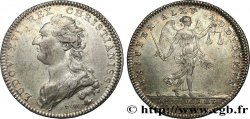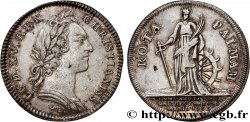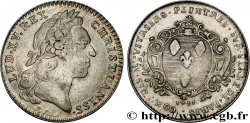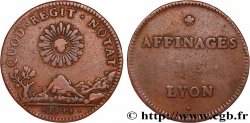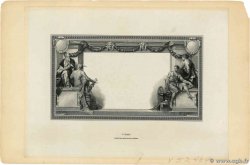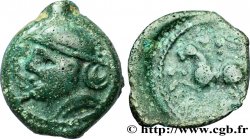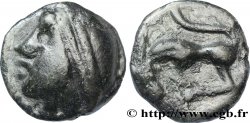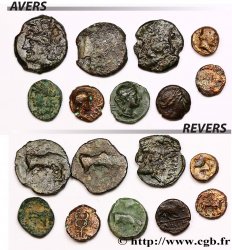Precedente 1/1
v11_1309 - CORPORATIONS - LES SIX CORPS DES MARCHANDS DE PARIS FOURBISSEURS - ARMURIERS 1742
MONNAIES 11 (2002)
Prezzo di inizio : 182.94 €
Valutazione : 365.88 €
Prezzo realizzato : 182.94 €
Numero di offerte : 1
Offerta maxima : 182.94 €
Prezzo di inizio : 182.94 €
Valutazione : 365.88 €
Prezzo realizzato : 182.94 €
Numero di offerte : 1
Offerta maxima : 182.94 €
Tipo : FOURBISSEURS - ARMURIERS
Data: 1742
Metallo : argento
Diametro : 29 mm
Asse di coniazione : 6 h.
Peso : 7,77 g.
Orlo : cannelée
Grado di rarità : R1
Commenti sullo stato di conservazione:
Ce jeton frappé sur un flan large et régulier. Une légère patine grise recouvre les deux faces de cet exemplaire
N° nelle opere di riferimento :
Diritto
Titolatura diritto : AD TVTELAM. REGIS. ET. HEROÜM. DECUS.
Descrittivo diritto : Un trophée d'armes ; à l'exergue en deux lignes : COMMVNAVTE. DES / FOURBISS..
Traduzione diritto : (La gloire pour la protection du roi et des héros).
Rovescio
Titolatura rovescio : CHRISTI. UIAS. PARANTI.
Descrittivo rovescio : Saint Jean assis à gauche, prêchant une femme prosternée devant lui ; à l'exergue : deux épées croisées et 17- 42. Signé LL. - F..
Traduzione rovescio : (Pour celui qui prépare les voies du Christ).
Commento
Les deux épées à l’exergue du revers montrent les armes des fourbisseurs d’épées : d’azur, à deux épées d’argent passées en sautoir, les gardes et les poignées d’or. Le travail des fourbisseurs consiste à fourbir et éclaircir les épées, les monter et les garnir. Les lames des fourbisseurs parisiens viennent d’Allemagne, de Franche-Comté ou de Saint-Étienne-en-Forez. Les fourreaux sont en général en hêtre recouvert de toile, puis de cuir cousu et collé.
The two swords in the exergue on the reverse show the coat of arms of the sword furnishers: azure, two silver swords crossed, the guards and hilts gold. The work of the furnishers consists of furnishing and clearing the swords, mounting them and garnishing them. The blades of the Parisian furnishers come from Germany, Franche-Comté or Saint-Étienne-en-Forez. The scabbards are generally made of beech covered with canvas, then sewn and glued leather
The two swords in the exergue on the reverse show the coat of arms of the sword furnishers: azure, two silver swords crossed, the guards and hilts gold. The work of the furnishers consists of furnishing and clearing the swords, mounting them and garnishing them. The blades of the Parisian furnishers come from Germany, Franche-Comté or Saint-Étienne-en-Forez. The scabbards are generally made of beech covered with canvas, then sewn and glued leather







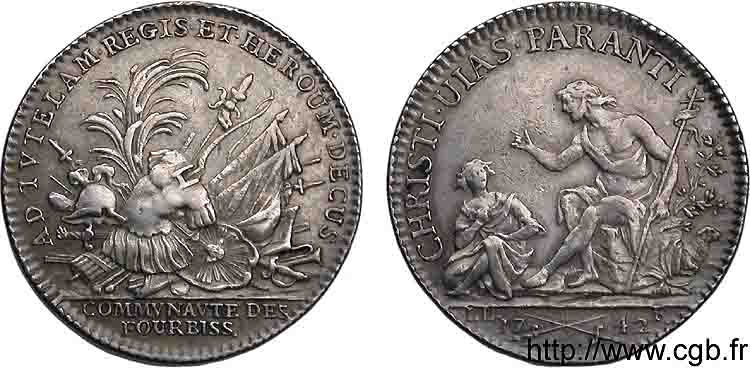
 Segnalare un errore
Segnalare un errore Stampate la pagina
Stampate la pagina Condividi mia selezione
Condividi mia selezione Fai una domanda
Fai una domanda Consegnare / vendere
Consegnare / vendere
 Descrittivo
Descrittivo
